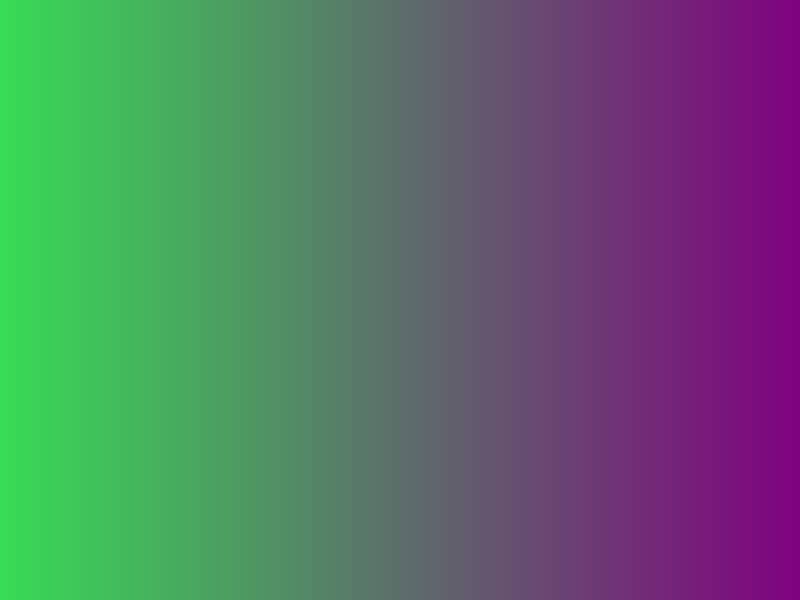Green and purple are almost polar opposites on the color wheel. That means you can find complementary purple and green hues. But what happens when green and purple are mixed together?
The outcome is determined by the color model in which you mix. Are we talking about paint, lighting, or ink? Whatever color model you’re using, today’s article will show you what color purple and green make when mixed.
When it comes to painting, green and purple are secondary colors, resulting from the combination of two primary colors.
What Do Green and Purple Make in Paint?
When green and purple are mixed, they produce a shade of dark gray. The dark gray color depends on the specific shades of green and purple used, as well as the proportions in which they are mixed.
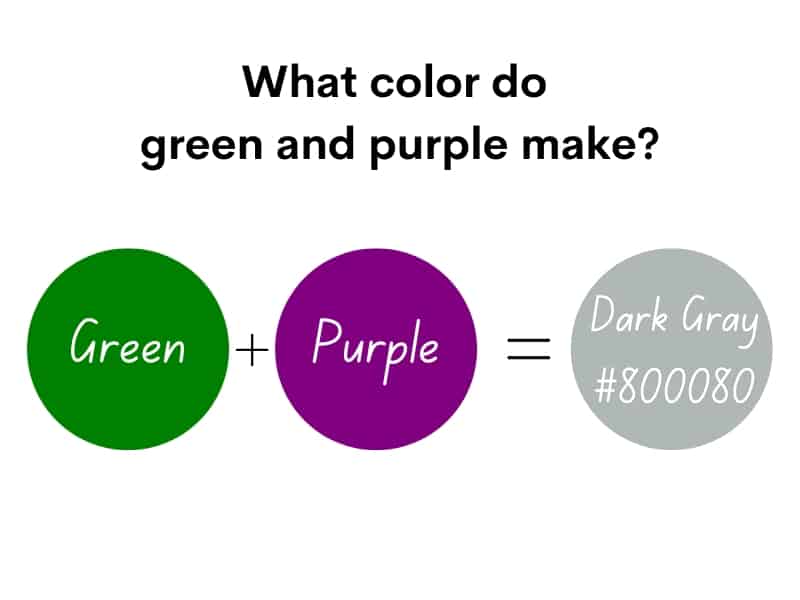
Green and purple are secondary colors in the RYB color model used in traditional art. If green is made by mixing yellow and blue, purple is the result of mixing red and blue.
So, when you mix green and purple together, it’s like making a mixture of 2 parts blue, 1 part yellow, and 1 part red.
Thus, it’s like mixing all three primary colors of the RYB space; only the proportions differ.
Since two parts of blue are involved in the mix, green and purple make a color close to gray.
If we had mixed red, yellow, and blue in equal proportions, the result of the mix would have been brown.
However, the result of the mix can be influenced by the shade of purple and green chosen. And if you use pure shades of green and purple, the result can vary depending on the proportions used.
The more green you add to the mixture, the warmer and lighter the resulting brown, while the more purple you add, the cooler and darker the result.
Moreover, if you mix lime green and purple, you get a dark gray, while if you use a more deep and rich green in the mixture, you get a dark gray with hints of blue.
The result is similar to Slate Blue, a beautiful grayish blue, which is also known as gray blue.
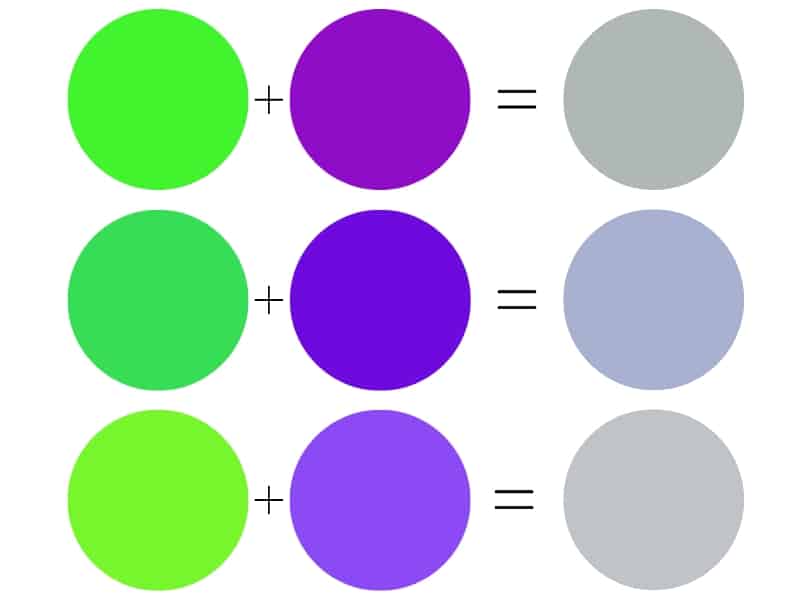
So, the combination of purple and green can create a visual effect that gives the appearance of a gray-blue color. Are you wondering why it’s called a visual effect?
A phenomenon known as simultaneous contrast occurs when purple and green are overlaid on top of each other. Thus, in areas where the purple and green overlap or intersect, the eyes may perceive a grayish hue with hints of blue.
This grayish hue is a perceived color created by the way our eyes perceive and process color information rather than a true gray-blue color.
So, depending on the type of shade of green and purple and the proportions used, when you mix green and purple, you can get different shades of gray, gray-blue, or even brown.
Understanding the RYB Color Model
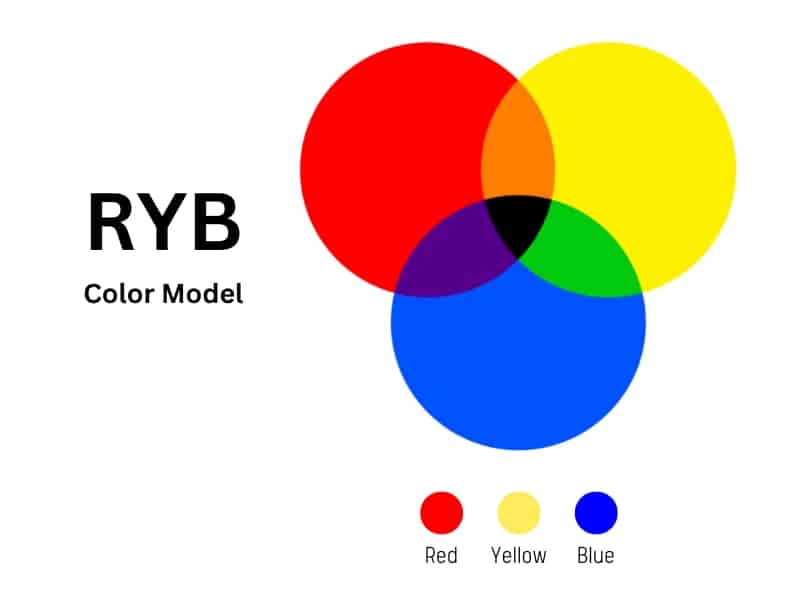
Understanding the RYB color model is essential, whether you’re an artist or enjoy experimenting with paint colors. This model lets you create colors by combining red, yellow, and blue — the primary colors.
Thus, by mixing these colors in paint, you get the secondary colors: orange, purple, and green.
- Red and yellow make orange
- Yellow and blue make green
- Blue and red make purple or violet.
Tertiary or intermediate colors are created by combining primary and secondary colors.
There are six tertiary colors in the RYB color model: chartreuse/lime green (yellow–green), teal/aqua (blue-green), violet (blue-purple), magenta (red-purple), vermilion/cinnabar (red-orange) and amber/marigold (yellow-orange).
Understanding the Art and Science of Color Mixing
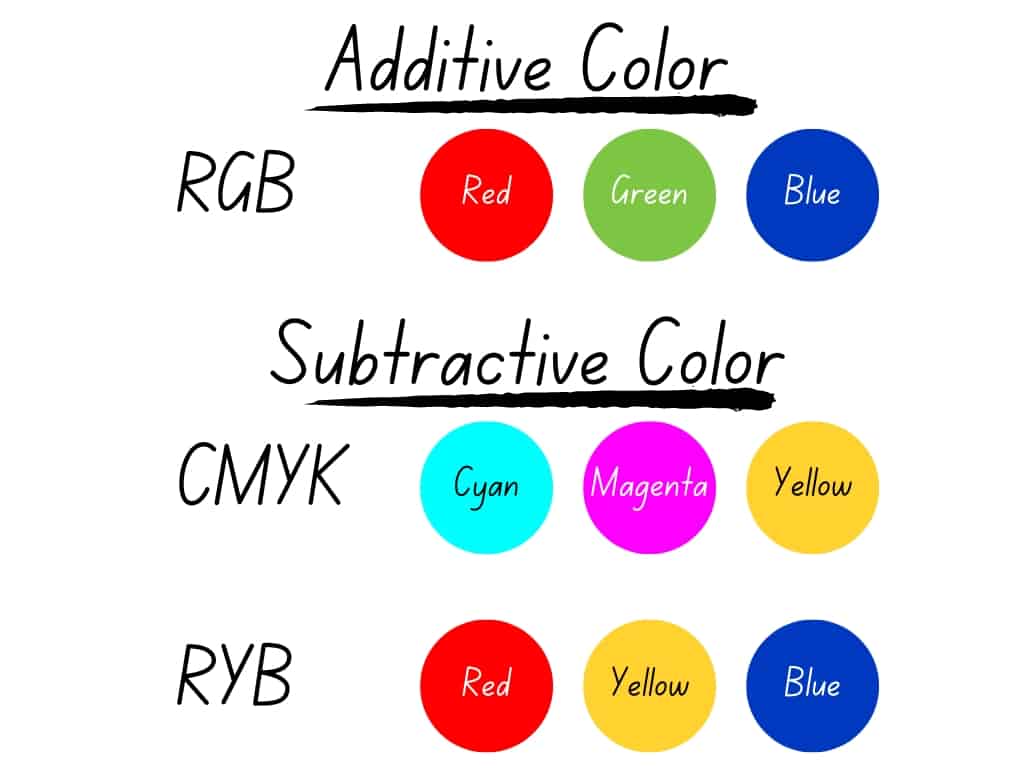
Color mixing is a fundamental concept in art, design, physics, and color science. This is known as the process of combining two or more colors to create a new color.
Thus, color mixing is classified into two types: additive and subtractive color mixing.
The RYB color model is a type of subtractive mixing because it requires the combination of pigments or paints to create new colors. When pigments or dyes are combined, certain wavelengths of light are absorbed while others are reflected.
As a result, the colors we see are created by subtracting or absorbing specific colors of light.
Because each primary color absorbs one of the other two primary colors in the RYB color model, when all three colors are combined, the result is a mixture that reflects very little light, resulting in a dark, muddy color known as a dark brown shade.
Mixing Lighter and Darker Colors
Whatever color you get when you mix purple and green, it might be close to what you need. If you don’t get the desired result, adjust the color slightly.
How is this possible? You’ll need to make different tints and shades of it.
Here are some suggestions.
Creating Tints
Tints are lighter versions of a color created by adding white to the mix. This gives you a brighter color. Also, by adding white, you will be able to decrease the intensity of a color.
Creating Shades
Shades are darker versions of a color, created by adding black to the mix. They are the exact opposite of tints, and by adding black, you get a deeper, richer color.
Unlike tints, where you add more white to open up a color, shades require you to be careful with the amount of black you use, as it is much stronger when added to your mix and can easily change the result if you are not careful with the amount you use.
The Colors Green and Purple
Green, nature’s color, is associated with renewal, growth, and freshness. It is made up of the primary colors blue and yellow. The shade of green can range from bright and vivid lime green to darker and more subdued forest green, depending on the proportions of blue and yellow used.
Purple is created by mixing the primary colors red and blue. It is frequently associated with royalty, luxury, and originality.
Purple can evoke feelings of mystery and ambiguity, but it is also associated with creativity, wisdom, and power. Moreover, it also represents enlightenment and spirituality.
Purple colors range from rich shades like amethyst to lighter, more delicate tones like lavender.
Now, let’s look at the results of combining green and purple: gray and gray-blue.
Gray-blue is a cool and soothing color created by mixing gray with blue or green with purple. Gray blue also conveys a sense of serenity or tranquillity.
This color appears slightly muted or desaturated, making it feel more subdued and sophisticated than a brighter shade of blue.
Gray, on the other hand, is a neutral color that is usually created by varying the proportions of black and white. Because of its versatility, it works well with all colors.
In terms of meanings, gray is associated with practicality, wisdom, seriousness, and safety. In addition, it has a calming effect and is frequently used in minimalist or modern designs.
What Do Green and Purple Make in Ink?
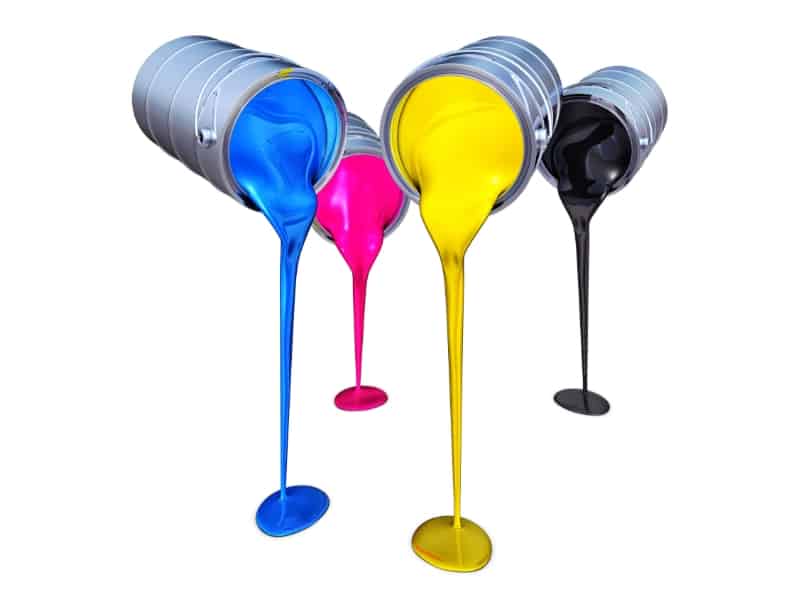
While both traditional art and the printing industry use subtractive color mixing, they use different color models. As a result, ink mixtures differ from paint mixtures.
You’re probably wondering what color purple and green make when mixed in ink.
When it comes to printing, purple and green make a color close to black.
Yes, black, you heard correctly!
In the CMYK model, the primary colors are cyan, magenta, and yellow. If you combine two primary colors, you get the secondary colors: red, green, and blue. While green is a secondary color resulting from mixing cyan and yellow, purple is a tertiary color resulting from blending magenta and blue.
So, when mixing green and purple, it’s like mixing cyan, magenta, yellow, and an extra blue (green = cyan + yellow; purple = magenta + blue);
Moreover, it looks like a combination of all the CMYK’s primary colors, and this mix results in black. Obviously, with an extra blue.
Understanding the CMYK Color Model
The CMYK color model, like the RYB color model, uses subtractive color mixing and is used when printing.
This model uses four-color ink: cyan, magenta, yellow, and black. The first three are known as the CMYK primary colors.
Suppose you mix pairs of two subtractive primary colors. In that case, you get the secondary colors of the CMYK model, which are the additive colors.
- Yellow and magenta make red
- Yellow and cyan make green
- Cyan and magenta make blue
Cool, right? Remember that tertiary colors are composed by mixing primary and secondary colors.
The tertiary colors of the CMYK color model are orange, chartreuse, spring green, azure, violet, and rose.
What Do Green and Purple Make in Lights?
In contrast to material colors that use subtractive color models, light uses additive color mixing.
So when it comes to lights, the RGB color model is used.
Purple (violet) is a tertiary color in the additive RGB space, just as it is in the CMYK subtractive model.
On the other hand, green is a primary color when talking about lights and physics.
When green and purple are mixed in the lights, they produce a color close to white.
That happens because purple is a tertiary color resulting from blue (primary) with magenta (secondary). In addition, green is a primary color. Therefore, if you combine all the primary colors in lights, you will get white.
Moreover, purple in RGB is made up of 62.7% red, 12.5% green, and 94.1% blue. Since purple has more blue than red, the color resulting from mixing purple with green may be white with hints of blue.
Understanding the RGB Color Model
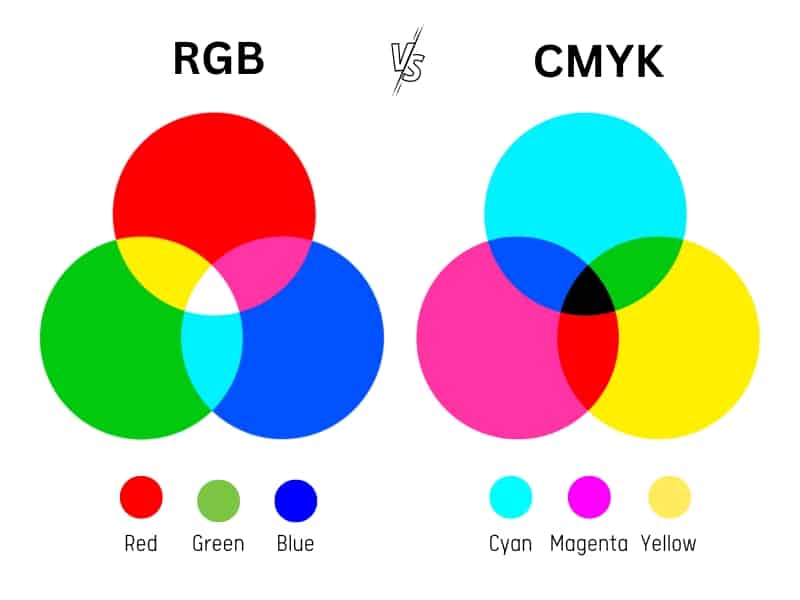
If the RYB and CMYK color models deal with material colors, RGB is about light and physics.
RGB is the only additive color system compared to the RYB and CMYK color models, which are subtractive.
While additive color starts with black (lack of light), and as color is added, the result becomes brighter, subtractive color starts with white (e.g., a white paper), and as color is added, the result becomes darker.
- Additive color: starts with black (lack of light); ends with black; color models: RGB;
- Subtractive color: starts with white (a piece of paper); ends with black; color models: CMYK, RYB;
The primary colors of the RGB model are red, green, and blue. Combining two primary colors, you get the secondary colors: cyan, magenta, and yellow.
Have you noticed? If you overlap the additive colors, you get the subtractive colors.
The tertiary colors of the RGB color model are rose, orange, chartreuse, spring green, azure, and violet.
How Do You Mix Colored Lights?
The easiest way to understand how mixing colored lights works is to use three flashlights with different colored lights: red, green, and blue, for example. If you overlap their light beams on a wall in the dark, you will see that you get white light.
If you want to understand how they are displayed on your display, you need to understand that adjusting the intensity of red, green, and blue light in pixels creates any hue.
For example, purple appears on the screen when the brightness of red light is at 62.7%, green at 12.5%, and blue at 94.1%.
Graphic designers and web developers use alternatives to the RGB color model, such as HSL (hue, saturation, lightness) and HSV (hue, saturation, value).
The HSL and HSV color models are more user-friendly than the RGB model because they are based on human color perception properties such as hue, saturation, and lightness/value, making it easier to select and adjust colors.
Furthermore, they provide finer control over a color’s saturation and lightness/value.
Using Green and Purple in Designs
When discussing purple and green color combinations in design, we must consider color harmony.
If you want to use complementary colors, you should know that green and purple go well together, but you must be careful with the shades you choose.
Purples with more red in the composition complement greens with more blue.
Moreover, shades of purple with more blue in the composition complement perfectly with the more yellowish shades of green.
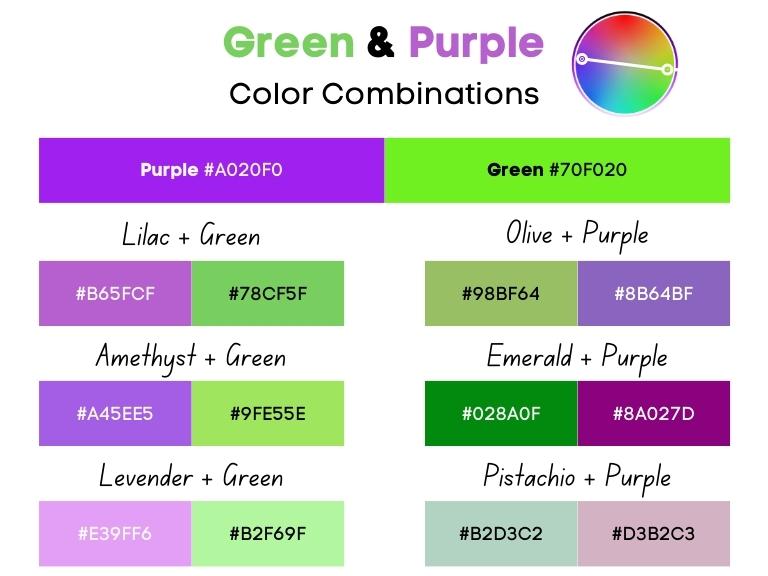
Last Words About What Color Purple and Green MakeWhen Mixed
Overall, while it may appear that greens and purples cannot be mixed in shades too far apart, the end result is quite surprising.
Depending on the color space, you could get anything from a white with blue undertones to a deep black or a moody dark gray with blue undertones.
As a result, understanding the properties of various color models and how they interact is critical in any mixture.
We hope you enjoyed our article on what colors purple and green make when mixed. Share this article with your friends to help us spread the word.

